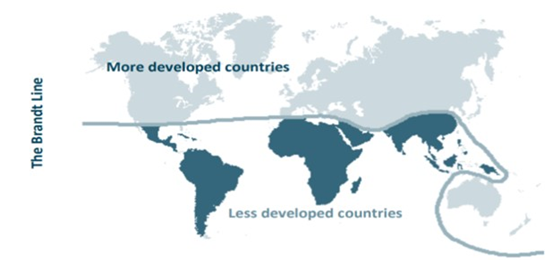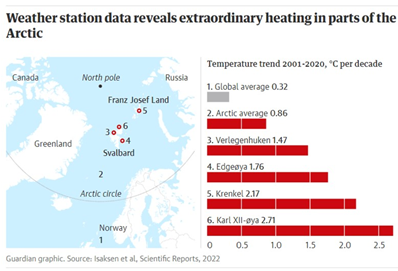24 Feb
Climate Change, Food Security and Climate-Smart Agriculture
- In news: According to the Global Food Policy Report (2022), climate change may push many Indians towards hunger by 2030 due to a decline in agricultural production and disruption in the food supply chain.
Background:
-
- Global food insecurity had already been rising, due in large part to climate phenomena.
- As temperatures rise, the yields of food and cash crops in South Asia are expected to decline, putting pressure on food security in the region.
- India, home to 1.4 billion people, is ranked 107 out of 116 countries in the Global Hunger Index, indicating a serious problem. It is projected that a 2.5 to 4.9 degrees Celsius increase in temperature across the country could lead to a decrease of 41%-52% in the wheat yield, and 32%-40% in rice.
- Effects on the nutritional quality of grains- an increase in carbon dioxide (CO2) in the atmosphere will have an adverse effect on nutritional quality. A decline in the nutritional quality of grains could exacerbate “hidden hunger”, a form of under-nutrition.
- At the same time, the way that food is often produced today is a big part of the problem. It is estimated that the global food system is responsible for about a third of greenhouse gas emissions—second only to the energy sector; it is the number one source of methane and biodiversity loss.
- How climate change in disrupting food productivity and causing food insecurity around the world
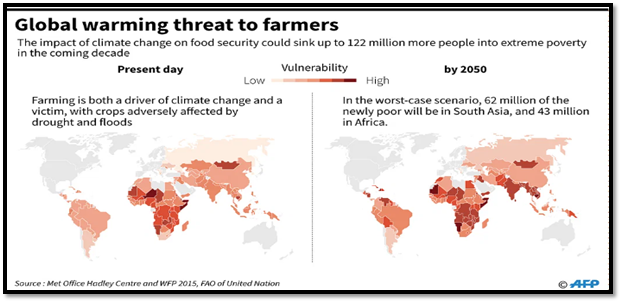
- Climate change impact on agro-ecosystems:
- Impact on food availability (productivity):
- Direct impacts include effects caused by a modification of physical characteristics such as temperature levels and rainfall distribution on agricultural production systems.
- Indirect effects are those that affect production through changes on other species such as pollinators, pests, disease vectors and invasive species. These indirect effects can play a major role. They are much more difficult to assess and project given the high number of interacting parameters and links, many of which are still unknown.
- Impact on food availability (productivity):
Rising global temperature will affect wheat production in all producing countries as wheat has a relatively low optimum temperature. For tropical climate systems, extreme heat limits the length of the growing season. For example, in India, the Indo-Gangetic Plains could become significantly heat stressed by 2050s potentially causing losses of 50 per cent of its wheat-growing area.
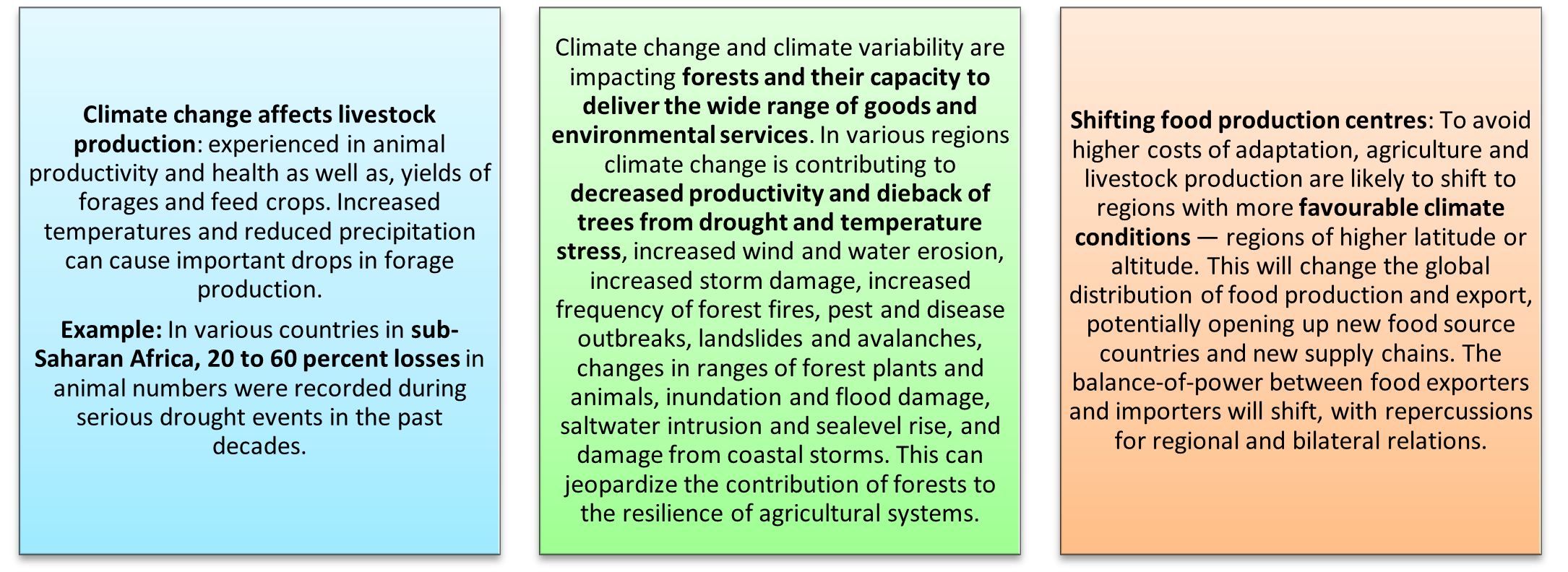
-
- Climate change affects capture fisheries and the development of aquaculture in marine and freshwater environments. Impacts occur as a result of both gradual atmospheric warming and associated physical (sea and inland water surface temperature, ocean circulation, waves and storm systems) and chemical changes (salinity content, oxygen concentration and acidification) of the aquatic environment. Increased occurrence of coral reef bleaching has been observed, threatening habitats of one out of four marine species. Various fish species are already migrating pole ward, resulting in the rapid “tropicalization” of mid- and high-latitude systems. A large scale redistribution of global marine fish catch potential is forecast, with a decrease of up to 40 percent in the tropics, and an increase of 30 to 70 percent in high-latitude regions.
- Climate change generates considerable uncertainty about future water availability in many regions. It will affect precipitation, runoff and snow/ice melt, with effects on hydrological systems, water quality and water temperature, as well as on groundwater recharge. An increase in temperature will trigger increased demand for water for evapo-transpiration by crops and natural vegetation and will lead to more rapid depletion of soil moisture.
Case study: India’s climate is projected to increase by 2–4°C by 2050 with some marginal changes in monsoon rain in monsoon months and large changes in rainfall during non-monsoon months. An increase of 2°C in temperature could decrease rice yields by about 0.75 tonnes per hectare in the high yielding areas.
- Impacts on production translate into economic and social consequences, affecting food security: Climate change affects food security in all its dimensions: access, availability, utilization and stability.
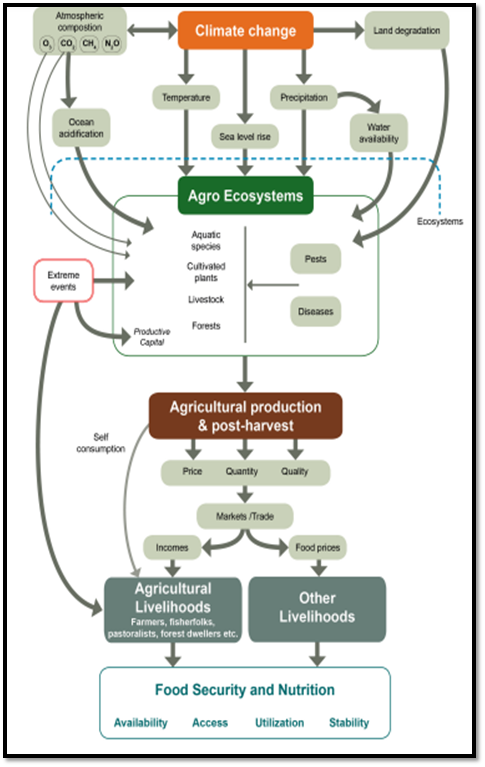
Climate change affects food production, and thus food availability. Climate change will impact the livelihoods and income of small-scale food producers and also, through food price increases and volatility, the livelihoods of poor net food buyers, restricting access to food.
Climate change can have a variety of impacts on the quality of drinking water, which is key to the good absorption of nutrients.
- Climate change has been found to have an impact on food safety, particularly on incidence and prevalence of food-borne diseases.
- Increased climate variability, increased frequency and intensity of extreme events as well as slow ongoing changes will affect the stability of food supply, access and utilization.
Net effects of climate change on food security depend on vulnerabilities of affected systems.
- Way forward to ensure availability of food
- Climate smart agriculture: Agricultural sectors must become climate-smart to successfully tackle current food security and climate change challenges. Agriculture, including forestry and fisheries, is crucial for food security and rural incomes as well as other essential products, such as energy, fiber, feed and a range of ecosystem services. Climate-smart agriculture is a pathway towards development and food security built on three pillars:
1. Increasing productivity and incomes,
2. Enhancing resilience of livelihoods and ecosystems and
3. Reducing and removing greenhouse gas emissions from the atmosphere.
Climate-smart agriculture contributes to a cross-cutting range of development goals. There are many opportunities for capturing synergies between the pillars of climate-smart agriculture, but also many situations where trade-offs are inevitable.

-
- Agro-climatic planning: Switch to less-thirsty crops for dry regions. For example, rice farmers could switch to crops that require less water such as maize or legumes.
- Invest in food processing and storage: Importing countries can develop local food processing and storage industries to increase the shelf life and safety standards of food, as food spoilage becomes an issue under warmer and more volatile weather conditions.
- Diversify sources of food based on emerging climatic pattern: Policies encouraging diversification should consider similar climatic zones. Countries within the same climate and geographical region are likely to face the same climate impacts. The concentration of imports from a particular climatic region will not reduce the risks associated with climate change.
The 2021 United Nations Food Systems Summit called on the global community to focus on global efforts and contributions to transform food systems. To meet the challenges of growing demand and food insecurity, we need to improve productivity through sustainable agriculture and farmer incomes. Digital transformation is key to driving innovation and adaptation in the agri-food sector. As well as making commitments—at all levels, including local, state, and national—to strengthening the resilience and sustainability of food systems, policymakers should invest in strategies and solutions to mitigate the effects of climate change on food systems.
Where it can be used:
- Paper1- climatology ( Global climatic change), Economic geography (World agriculture, Food and nutrition problems; Food security)
- Paper2- agriculture, contemporary issues.
Links:
- https://www.fao.org/fileadmin/templates/est/meetings/climate_2013/Wheeler_CC_impacts_on_FoodSecurity.pdf
- https://www.worldbank.org/en/topic/climate-smart-agriculture
- https://www.frontiersin.org/articles/10.3389/fsufs.2021.671419/full
- https://www.thethirdpole.net/en/food/climate-change-drives-down-yields-and-nutrition-of-indian-crops/?amp&gclid=CjwKCAiA0cyfBhBREiwAAtStHEVZO5Bg8wnq95iDQqVfuJ5Uwy-CKuPrAR1Wk0o4QGtL2ZE875mxYRoCC3QQAvD_BwE
International Year of Millets 2023: India can lead the way
In news: United Nations General Assembly (UNGA) has declared 2023 as International Year of Millets (IYM).
- Millets in India:
- India, the largest producer of nutri-cereals, has initiated steps to boost exports. India accounts for an estimated share of around 41 percent of global millets production.
- India produces more than 170 lakh tonnes of millet, which is 80 per cent of Asia’s and 20 per cent of global production.

- Millets have been reduced to “orphan crops” over the years, planted largely in marginal areas prone to moisture stress.
- Between 2003-04 and 2021-22, India’s millet output has actually fallen from 32 mt to 15.92 mt.
- Not only has the consumption of millets declined, but the area under production has been replaced with commercial crops, oilseeds, pulses and maize. This has resulted in changes in dietary patterns with preferential consumption towards fine-calorie-rich cereals.
- Millets as Smart-Foods: Significance and Benefits:
- Health and Nutritionally Rich: Millets are nutritionally superior to wheat and rice owing to their higher levels of protein with a more balanced amino acid profile. Similarly, the dietary fiber content of millet is also higher compared to some of the staple cereals. Millets also contain various phyto-chemicals which exert therapeutic properties owing to their anti-inflammatory and anti-oxidative properties.
The nutritionally superior traits — which significantly address the problem of “hidden hunger” arising from the consumption of energy-dense but micronutrients-deficient foods — are present in other millets too.
- Climate Resilient: Millets are the backbone for dry land agriculture. They are hardy, resilient crops that have a low carbon and water footprint, can withstand high temperatures, grow on poor soils with little or no external inputs and are thus termed as the ‘miracle grains’ or ‘crops of the future’. In times of climate change, they are the most secure crops to small farmers as they are the hardiest, most resilient and climate adaptable crops in harsh and drought environments.
- Ecologically Sustainable: Millet production is not dependent on the use of chemical fertilizers. These crops do not attract pests, and a majority of the millets are not affected by storage pests. Thus, the use of pesticides is also not mandated.
Why is increasing the consumption and production of millets important to India?
- Millets are primarily grown during the kharif season in rainfed areas as these crops require less water and agricultural inputs than other cereals. It has great potential to generate livelihoods, increase farmers’ income and ensure food and nutritional security.
- Will help double farm incomes and encourage farm diversification is to make millet production attractive by introducing millet cultivation in areas where farmers’ distress is visible.
For instance, the cotton dependency of Vidarbha's farmers and economy is well-known, especially in the arid zones. The region in Maharashtra is also known as the farmer suicide capital.
- Will help tackle distress linked to feminisation of agriculture associated with rural to urban migration of male counterparts.
- Millet can solve Indian malnutrition problems: India still has one of the worst rates of child malnutrition in the world. Millets, being super foods, are high in both macro-nutrients, like proteins and fats, and micro-nutrients, like iron and calcium and can guard us against many vitamin and mineral deficiencies.
Example: inclusion of millets in Mid-day meal program.
Initiatives taken by India:
- In view of the nutritional value of the millets, the Government has notified millets as Nutri-cereals in 2018.
- The Government, under the Sub Mission on National Food Security Mission (NFSM) -Nutri-cereals, is creating awareness among farmers for Nutri Cereals (Millets) such as ragi, sorghum, bajra and small millets through demonstration and training.
- National Millets Mission (NMM): launched in 2007 to promote the production and consumption of millets.
- The Government is popularizing Nutri-cereals through Research & Development support.
- Price Support Scheme (PSS): Provides financial assistance to farmers for the cultivation of millets.
- The government has introduced millets in the Public Distribution System to make it accessible and affordable to the masses.
- Union Budget 2022-23 highlighted that support would be provided for post-harvest value addition, enhancing domestic consumption, and for branding millet products nationally and internationally.
- A major initiative was taken by the Union Ministry of Agriculture and Farmers Welfare by organizing a 'Special Millets Lunch' for MPs in the Parliament in 2022.
By declaring 2023 as ‘The International Year of Millets,’ the UN General Assembly has set the tone for increasing the area of cultivation of millet across the world. India, which is the world’s largest producer of millet, is taking wide-ranging steps to implement the benefits of this opportunity.
Where it can be used:
- Paper1- climatology ( Global climatic change), Economic geography (World agriculture, Food and nutrition problems; Food security)
- Paper2- agriculture, contemporary issues.
NIB:
1. International Year of Millets 2023: India can lead the way
Links:
- https://www.downtoearth.org.in/blog/agriculture/how-millet-production-can-empower-women-farmers-strengthen-agriculture-76293
- https://www.downtoearth.org.in/video/food/why-millets-in-india--87604#:~:text=buckwheat%20and%20amaranth.-,Millets%20are%20superfoods.,many%20vitamin%20and%20mineral%20deficiencies.
- https://www.fedev.org/blog/focus-areas/making-most-indian-millets/
- https://thewire.in/agriculture/millet-promotion-india-government-strategy
Energy crises and sustainable energy approach in India
- In news: Union Finance Minister stressed on 'Green Growth' and clean energy transition in her budget speech delivered in the Parliament on February 1, 2023.
- Background: energy crises in India:
- India is the third largest consumer & producer of electricity in the world. Coal and oil have so far served as bedrocks of India’s industrial growth and modernization. The rapid growth in fossil energy consumption has also led India’s annual CO2emissions to risen to become the third highest in the world.
- India is faced its worst power crisis in over six years in 2022 as a heatwave bakes vast swathes of South Asia, causing widespread power outages.
- Other reason of energy crises in India include:
- Supply of coal at thermal power plants running out- The sudden surge in demand, attributed to the industrial and economic development as they picked after the pandemic. And the domestic producers of coal are unable to meet the demands.
- High worldwide thermal coal prices-from 2021, international prices for coal started reaching record highs because of the rise in industrial demand, international price fluctuations and the latest being the Russian invasion of Ukraine.
- Coal supply disruption primarily caused by severe rainfall- inaction of power plant operators to stock adequate coal before the onset of the southwest monsoon which floods coal mines, hampering their production and supply.
- Losses during transmission and distribution at a national average of 27% reflect the need for a paradigm shift from centralized to clean and decentralized power generation based on renewable resources.
- Discom Losses: Despite twenty years of sectoral reforms, discoms have lost 21% of their total revenue (2019-20).
- TPP inefficiency: India could have handled this demand rise by increasing thermal generation, but instead, 236 GW of TPPs (at 59% capacity utilisation) are operating significantly below their potential.
- According to the National Power Portal, critical inventories were present for both local and imported coal-based (ICB) power plants. 100 of the country's total 173 thermal power plants have coal stock problems that are critical, according to the Central Electricity Authority report.
- Sustainable energy approach in India: solution to energy crises
- The current global coal crisis is creating opportunities to decrease dependency on fossil fuels and to discover ways to adopt green and renewable energy.
- Exploiting renewable and solar resources locally would help to meet the escalating power requirements in a decentralized, efficient and sustainable manner. However, a major thrust for R&D in solar technologies is required to optimize the generation cost and enable a competition with the conventional fossil fuel based options.
- Environmental and economic benefits of using renewable energy include:
- Generating energy that produces no greenhouse gas emissions from fossil fuels and reduces some types of air pollution
- Diversifying energy supply and reducing dependence on imported fuels
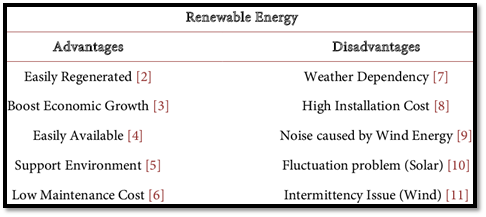
- Renewable energy potential in India:
- The country has an estimated renewable energy potential of around 85,000MW from commercially exploitable sources, i.e., wind, small hydro, and biomass/bioenergy.
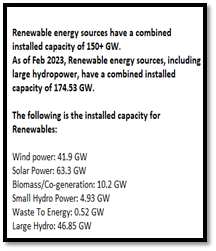
-
- Solar energy potential: India's geographic region receives an estimated 5 quadrillion kilowatt-hours (kWh) of solar energy annually, with about 300 clear and sunny days. The National Institute of Solar Energy calculated that the nation's solar potential is 748 GW, assuming that solar PV modules will cover around 3% of the country's wasteland area. Solar hotspots in India have the potential to offset a huge volume of GHG emissions as demonstrated and help realize a low carbon economy at a faster rate.
- Wind energy potential in India: as per the National Institute of Wind Energy there is a total wind energy potential of 302 GW. India has 174 GW of potential offshore wind resources, mostly concentrated off the shores of Gujarat and Tamil Nadu, according to the World Wind Energy Council.
- India is very rich in biomass. It has a potential of 19,500 MW (3,500 MW from biogas based cogeneration and 16,000 MW from surplus biomass).
- Steps taken by Indian government:
- PM-KUSUM: The Ministry of New and Renewable Energy (MNRE) started it to encourage the installation of off-grid solar pumps in rural areas and lessen reliance on the grid in areas that are connected to the grid.
- The "National Programme on High Efficiency Solar PV Modules" production-linked incentive programme was launched.
- A plan for "Development of Solar Parks and Ultra Mega Solar Power Projects" is being implemented with a goal capacity of 40 GW by March 2022 in order to support big scale grid linked solar power projects.
- A plan is currently being implemented for Central Public Sector Undertakings to build 12 GW Grid-Connected Solar PV Power Plants using local cells and modules. Gap in viability This programme offers funding assistance.
- India was to become a hub for the production and export of green hydrogen, according to the National Hydrogen Mission's mission statement.
- ISA: is an intergovernmental treaty-based organisation with a global mandate to catalyse solar growth by helping to reduce the cost of financing and technology.
- National Wind-Solar Hybrid Policy, 2018: to provide a framework for promotion of large grid connected wind-solar PV hybrid systems for optimal and efficient utilisation of wind and solar resources, transmission infrastructure and land.
- New National Biogas and Organic Manure Program (NNBOMP) and Biogas Power (Off-Grid) Generation and Thermal Application Program (BPGTP).
In India, renewable energy is at the take-off stage. India with large renewable energy resources (solar PV, wind, solar heating, small hydro and biomass) is to set to have large-scale development and deployment of renewable energy projects.
Where it can be used:
- Paper1: climatology (Global climatic change), economic geography (Energy crisis)
- Paper2: resources (energy crises), contemporary issues.
Links:
- https://energsustainsoc.biomedcentral.com/articles/10.1186/s13705-019-0232-1
- https://www.epa.gov/statelocalenergy/local-renewable-energy-benefits-and-resources
- https://www.conserve-energy-future.com/causes-and-solutions-to-the-global-energy-crisis.php#:~:text=Renewable%20energy%20sources%20can%20reduce,to%20reduce%20greenhouse%20gas%20emissions.
Mammatus Clouds
Mammatus comes from the Latin mamma which translates to "udder" or "breast". Their striking appearance is most visible when the sun is low in the sky and their pouches are framed by the sunlight. This supplementary feature is a firm favourite with many meteorologists as well as cloud and photography enthusiasts.
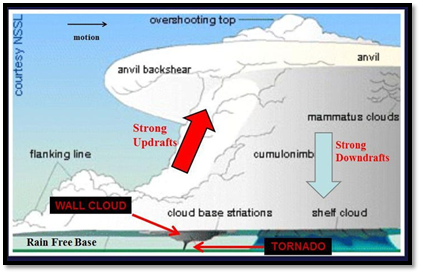
These are some of the most unusual and distinctive clouds formations with a series of bulges or pouches emerging from the base of a cloud. The shape of mammatus formations can vary widely; from the classic protruding shape, to a more elongated tube hanging from the cloud above.
How do mammatus clouds form?
Mammatus clouds are usually formed in association with large cumulonimbus clouds. Typically, turbulence within the cumulonimbus cloud will cause mammatus to form, especially on the underside of the projecting anvil as it rapidly descends to lower levels. This reverses the usual cloud-forming process of upward growth, making for an uneven cloud base.
What weather is associated with mammatus clouds?
Mammatus often forms in association with Cumulonimbus clouds, which in turn bring thunderstorms due to their huge mass of unstable air. Mammatus cloud generally form in the most unstable cumulonimbus, meaning that there is also a chance of hail, heavy rain and lightning in the vicinity, and if the air is cold enough during winter they can produce snow. Sometimes mammatus may form on other cloud types which produce no rain, though this is far less common.
Mammatus usually form on the base of a cumulonimbus anvil, but they have also been sighted to form on other cloud types, such as stratocumulus, altostratus and altocumulus. Mammatus have also been observed to form on the underside of volcanic ash clouds.
Links:
- https://whatsthiscloud.com/cloud-features/mamma/
- https://www.metoffice.gov.uk/weather/learn-about/weather/types-of-weather/clouds/other-clouds/mammatus
Fujiwhara Effect - Edukemy Current Affairs
The Fujiwhara effect, sometimes referred to as Fujiwara interaction or binary interaction, is a phenomenon that occurs when two nearby cyclonic vortices orbit each other and close the distance between the circulations of their corresponding low-pressure areas.
The effect is named after Sakuhei Fujiwhara, the Japanese meteorologist who initially described the effect in the 1920s. Binary interaction of smaller circulations can cause the development of a larger cyclone, or cause two cyclones to merge into one. Extratropical cyclones (midd and high latitude lows) typically engage in binary interaction when within 2,000 kilometres (1,200 mi) of one another, while usually smaller tropical cyclones typically interact within 1,400 kilometres (870 mi) of each other.
The interaction could lead to changes in the track and intensity of either or both storms systems. In rare cases, the two systems could merge, especially when they are of similar size and intensity, to form a bigger storm. There are five different ways in which Fujiwhara Effect can take place(as mentioned in the image below).
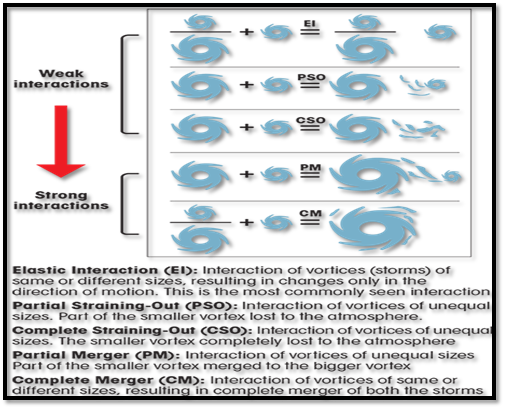
The first known instance of the effect was in 1964 in the western Pacific Ocean when typhoons Marie and Kathy merged.
Links:
- https://www.weather.gov/news/fujiwhara-effect
- https://www.downtoearth.org.in/news/world/perfect-storm-what-is-the-fujiwhara-effect--85337
Karakoram Anomaly
The ‘Karakoram Anomaly’ is termed as the stability or anomalous growth of glaciers in the central Karakoram, in contrast to the retreat of glaciers in other nearby mountainous ranges of Himalayas and other mountainous ranges of the world.
The researchers at the Indian Institute of Science Education and Research (IISER) Bhopal have taken a significant leap and attributed this phenomenon known as the ‘Karakoram Anomaly’ .
They have linked the recent resurgence of western disturbances (WDs) to this phenomenon.
A report published by the Ministry of Earth Sciences in June 2020 stated that despite the declining trend in snowfall and retreat of glaciers in recent decades in several areas of Hindukush Karakoram Himalayas, the high elevation Karakoram Himalayas have experienced higher winter snowfall that has shielded the region from glacier shrinkage.
The glaciers of central Karakoram have surprisingly remained unchanged or slightly increased in the last few decades.
This phenomenon has been puzzling glaciologists and providing climate deniers with a very rare straw to clutch at.
The study has claimed that the recent revival of western disturbance has been instrumental in triggering and sustaining the Karakoram Anomaly since the advent of the 21st century.
This is for the first time that a study brought forth the importance that enhanced WD (Western Disturbance) precipitation input during the accumulation period plays in modulating regional climatic anomalies.
It added that WDs are the primary feeder of snowfall for the region during winters. It suggests they constitute about around 65% of the total seasonal snowfall volume and about 53% of the total seasonal precipitation, easily making them the most important source of moisture.
The precipitation intensity of WDs impacting Karakoram has increased by around 10% in the last two decades, which only enhances their role in sustaining the regional anomaly.
Links:
- https://pib.gov.in/PressReleasePage.aspx?PRID=1842366
Derecho - Edukemy Current Affairs
A derecho, according to the US’s National Weather Service is “a widespread, long-lived, straight-line windstorm” that is associated with a “band of rapidly moving showers or thunderstorms”. The name comes from the Spanish word ‘la derecha’ which means ‘straight’. Straight-line storms are those in which thunderstorm winds have no rotation unlike a tornado. These storms travel hundreds of miles and cover a vast area.

Being a warm-weather phenomenon, a derecho generally – not always – occurs during summertime beginning May, with most hitting in June and July. However, they are a rare occurrence as compared to other storm systems like tornadoes or hurricanes.
Why did the sky turn green during the derecho that hit US recently?
Severe thunderstorms result in a ‘green sky’ due to light interacting with the huge amount of water they hold. It is believed that the big raindrops and hail scatter away all but the blue wavelengths due to which primarily blue light penetrates below the storm cloud. This blue then combines with the red-yellow of the afternoon or the evening sun to produce green.
Are there different types of derechos?
They fall into three categories – progressive, serial and hybrid.
- A progressive derecho is associated with a short line of thunderstorms that may travel for hundreds of miles along a relatively narrow path. It is a summer phenomenon.
- A serial derecho, on the other hand, has an extensive squall line – wide and long – sweeping across a large area. It usually occurs during spring or fall.
- Hybrid ones have the features of both progressive and serial derechos.
They mostly occur across central and eastern parts of the United States. Derechos have also been documented elsewhere across the world. In 2010, Russia witnessed its first documented derecho. They have also swept through Germany and Finland, and more recently in Bulgaria and Poland.
Links:
- https://indianexpress.com/article/explained/everyday-explainers/what-is-derecho-storm-that-turned-the-sky-green-in-the-us-8015503/
- https://www.weather.gov/lmk/derecho
Case study: Groundbreaking climate-smart agricultural model empowers rural women in Maharashtra
Location and issue: Located in central-western India, the Marathwada region in the state of Maharashtra is recognised as one of India’s most drought-prone areas.
- Marginal farmers in this region grow cash crops such as soy and cotton, which require more water, chemical fertilisers and pesticides.
- This damages their land, health and the environment in the long run.
- Moreover, women in this region, despite being actively engaged in agriculture, have no decision-making role on their farms and no support from government extension programmes to enhance their capacity as farmers.
- To address these issues, Swayam Shikshan Prayog (SSP) piloted its women-led climate-smart agriculture model in 2014.
Approach:
- SSP’s climatesmart agriculture model for women farmers promotes sustainablefarming techniques, diversifies livelihoods through agriculture-allied businesses, promotes consumption and marketing of nutritious, locally-grown foods, and improves water management systems.
- As a result, the cost of farming has fallen, and household food security and soil fertility have improved. Moreover, women farmers also helped in afforestation, increasing land for pasture, and improving groundwater resources.
- They have also increased their incomes by selling surplus food crops and undertaking other businesses, such as livestock rearing, dairy production and seed processing.
Results
- Since 2015, 41,000 women farmers have adopted this model. Around 30,000 acres of dry land are managed using organic farming methods and water and soil conservation measures. There has been a 25 percent increase in crop yield due to the use of mixed-cropping methods and organic-inputs.
- Women farmer households have saved US$497 per family per year due to consumption of food from their farms.
- SSP has organised the women farmers in producer groups and collectives, and has adopted a market-based approach that encourages first-time access for marginal women farmers so they get competitive prices for their yield.
- The climate smart agriculture model brought women to the forefront and repositioned them as farmers (instead of labourers) and bearers of knowledge. This enabled them to take informed decisions related to what to grow, what to consume and how much to sell.
Success factors
- The project provided training in key resilience practices, while other partners provided loans and helped to facilitate knowledge exchange between farms. This approach builds women’s capacity to practise sustainable agriculture and water conservation to help them ensure enough food and income for their households.
- Other success factors included:
- A cadre of 500 women-farmer leaders (also known as community resource persons) was created for knowledge transfer.
- A mentoring scheme was promoted to assist other women farmers to practise and replicate this model.
- A community-resilient fund was set up to provide loans and financial support to women-farmers for business, agriculture, livestock, water, amongst other things.
- Lobbying and advocacy through grassroots leaders and dialogues with government authorities resulted in women farmers obtaining access to agriculture schemes and benefits.
Learning
- A multi-pronged approach that includes agricultural techniques, livelihood diversification, social and cultural factors and innovative financial models can strengthen the position of women as farmers.
- Strengthening the capacity of women farmers can lead to the improved socio-economic status of their households, therefore building the resilience of their families to respond to climate change impacts.
- Partnering with governments, experts, corporates and community stakeholders can help in the successful implementation of climate-smart agricultural approaches.
Where it can be used:
- Paper1- climatology (Global climatic change), Economic geography (World agriculture, Food and nutrition problems; Food security)
- Paper2- agriculture, contemporary issues.
Links:
- https://reliefweb.int/report/india/groundbreaking-climate-smart-agricultural-model-empowers-rural-women-maharashtra
Map
|
Singalila National Park |
|
|
Yaya Tso |
|
|
Durgavati Tiger Reserve |
|
|
Kadavur Slender Loris Sanctuary |
|
|
Asola Bhatti Wildlife Sanctuary |
|
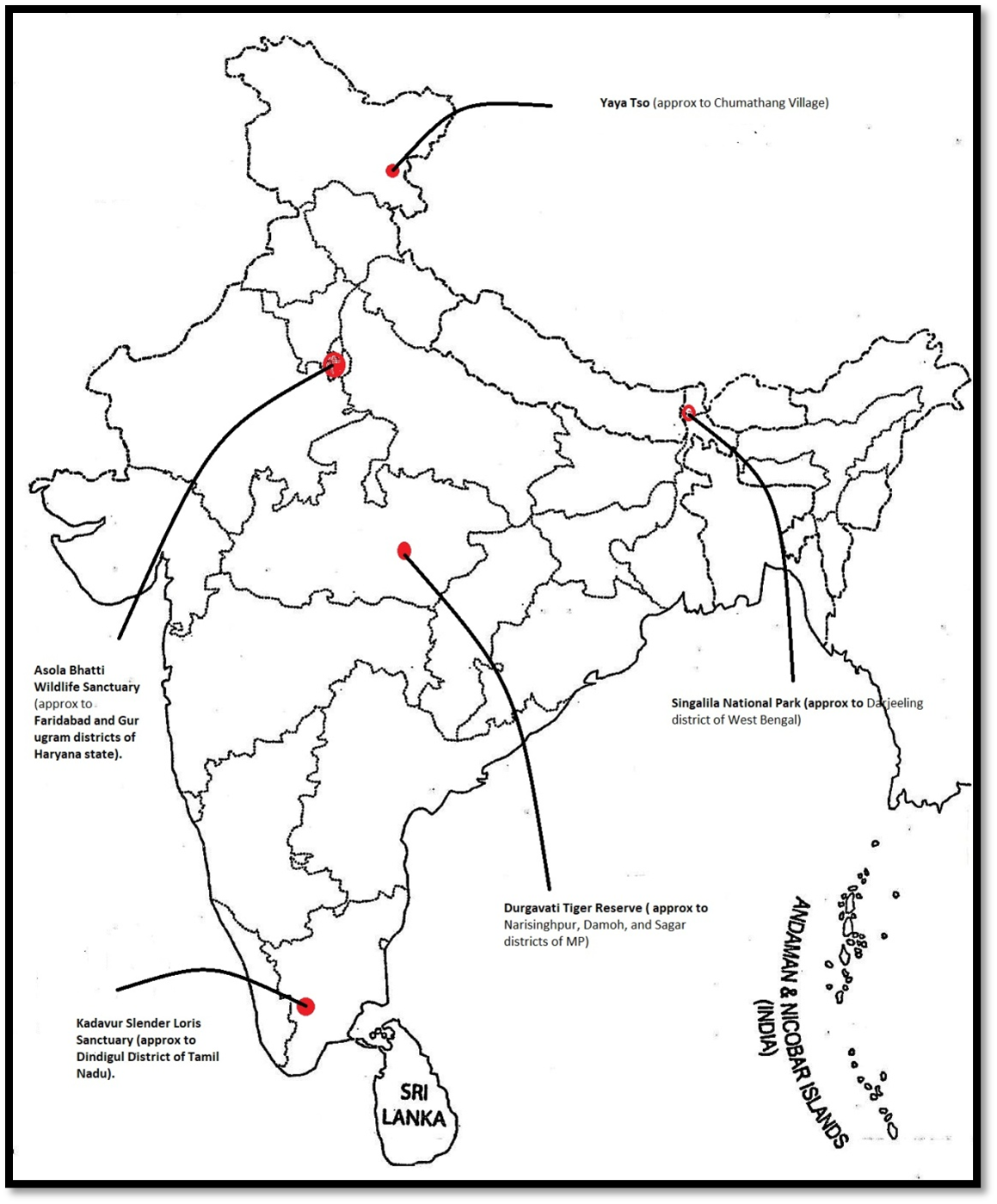
KOSMOS MCQs
1. Which of the following releases the Global Food Policy Report?
- World Health Organisation
- Food and Agriculture Organization of the United Nations (FAO)
- International Food Policy Research Institute
- Codex Alimentarius Commission(CAC)
2. Consider the following statements:
- Millets are the backbone for dry land agriculture. They are hardy, resilient crops that have a low carbon and water footprint, can withstand high temperatures, grow on poor soils with little or no external inputs and are thus termed as the ‘miracle grains’ or ‘crops of the future’.
- Millets are largely a kharif crop in India.
- Jowar is the largest millet crop grown worldwide.
Which of the following statements is/are true?
- 1 and 3 only
- 1 and 2 only
- 2 and 3 only
- 1, 2 and 3
3. With reference to the Mammatus clouds, consider the following statements:
- They typically form alongside big cumulonimbus clouds.
- They are formed in equitorial region only.
Which of the statements given above is/are correct?
- 1 Only
- 2 Only
- Both 1 and 2
- Neither 1 nor 2
4. “Fujiwhara Effect” was seen in the news recently. It means –
- It is a phenomenon that occurs when two nearby cyclonic vortices orbit each other and close the distance between the circulations of their corresponding low-pressure areas.
- The outcome of the chaotic motion of heavenly bodies.
- The outcome brought on by rising atmospheric methane levels.
- The convergence of polar ocean currents close to the equator.
5. Consider the following statements:
- The Karakoram Anomaly is the phenomena where the glacier mass in the Karakoram does not diminish.
- It is associated with the "resurgence of Western Disturbances (WDs)" phenomenon.
Which of the statements given above is/are correct?
- 1 Only
- 2 Only
- Both 1 and 2
- Neither 1 nor 2
6. Where is Singalila National Park located?
- Odisha
- Assam
- West Bengal
- Bihar
7. Consider the following in reference to “Yaya Tso”:
- It is first Biodiversity Heritage Site in Himacha pradesh under the Biodiversity Act.
- It serves as nesting location for birds such the bar-headed goose, black-necked stork, and Brahminy duck.
- It is one of India's top locations for black-necked stork breeding.
Which of the following statements is/are true?
- 1 and 3 only
- 1 and 2 only
- 2 and 3 only
- 1, 2 and 3
8. Which of the following statements with respect to Ken- Betwa river Interlink project, is/are correct?
- It is the first river interlinking project in the country.
- The project's objective is to move extra water from the Betwa river to the Ken river in MP.
Which of the statements given above is/are correct?
- 1 Only
- 2 Only
- Both 1 and 2
- Neither 1 nor 2
9. Kadavur Slender Loris Sanctuary is located in:
- Karnataka
- Kerala
- Andhra Pradesh
- Tamil Nadu
10. Where is Asola Bhatti Wildlife Sanctuary located?
- Haryana
- Punjab
- Gujarat
- Maharashtra
Share the article
Get Latest Updates on Offers, Event dates, and free Mentorship sessions.

Get in touch with our Expert Academic Counsellors 👋
FAQs
Geography Current Affairs focuses on the contemporary issues, events, and developments in the field of geography. It covers recent geographical phenomena, environmental changes, geopolitical shifts, and related news. This differs from regular geography studies which may focus more on foundational concepts, historical contexts, and theoretical frameworks.
Updates are provided regularly to ensure that subscribers stay informed about the latest developments in geography. Typically, updates are provided on a fortnightly basis, depending on the frequency of significant events and changes in the field.
Absolutely. Geography Current Affairs serves as a valuable resource not only for Geography optional but also for GS papers, especially GS Paper 1 (covering Indian Heritage and Culture, History, and Geography of the World and Society) and GS Paper 3 (covering Technology, Economic Development, Biodiversity, Environment, Security, and Disaster Management). It aids in building a holistic understanding of various topics and strengthens answer-writing skills by incorporating contemporary examples and perspectives.
Geography Current Affairs holds immense importance for UPSC preparation, particularly for aspirants opting for Geography optional. It helps candidates stay updated with the latest developments, geographical phenomena, environmental issues, and geopolitical shifts worldwide, aligning them with the dynamic nature of the subject as tested in the UPSC examinations.


